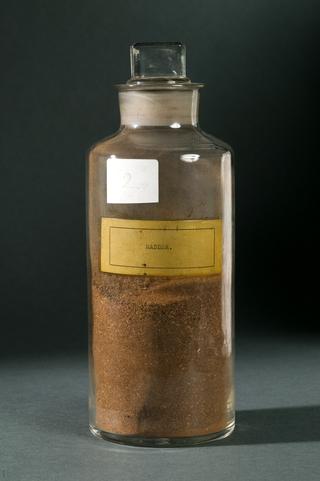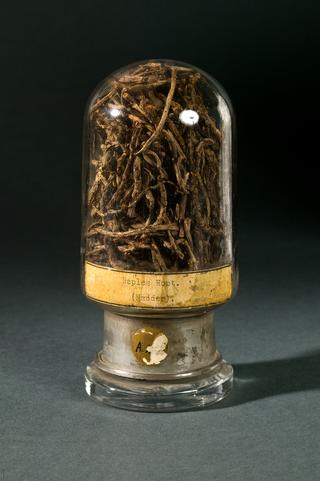
Sample of the dye Anisol Red made by Peter Griess
- Made:
- c. 1878

Sample of the dye Anisol Red made by Peter Griess, c. 1878
Johann Peter Griess (1829–88), a German chemist, made major contributions in the development of azo dyes through a succession of breakthrough in the 19th century. In 1858, Griess achieved the diazotisation reaction, from which azo dyes are derived. Soon afterwards, dye manufacturers and chemists began to produce azo dyes like Bismarck brown by Carl Alexander Martius in 1863. In 1878 Griess patented his own azo dye, anisol red, further developing the reaction of diazonium and producing phenolic compounds.
This sample was made by Griess himself in support of the patent while residing in England.
Azo dyes are chemically easily manipulated to produce a wide variety of colours, but could also be formulated to be applied directly to textiles, without the need for a mordant (substance that helps the colour bind to the textile). This group of dyes became significant and is still used in several industries, including food, paint, cosmetic and textile.
Born in Germany, Griess moved to England in 1862 to work at the Royal College of Chemistry. He remained in the country until his death and also worked in the brewing industry as a chemist in Burton-on-Trent, where he co-founded the Bacterium Club in 1876.




